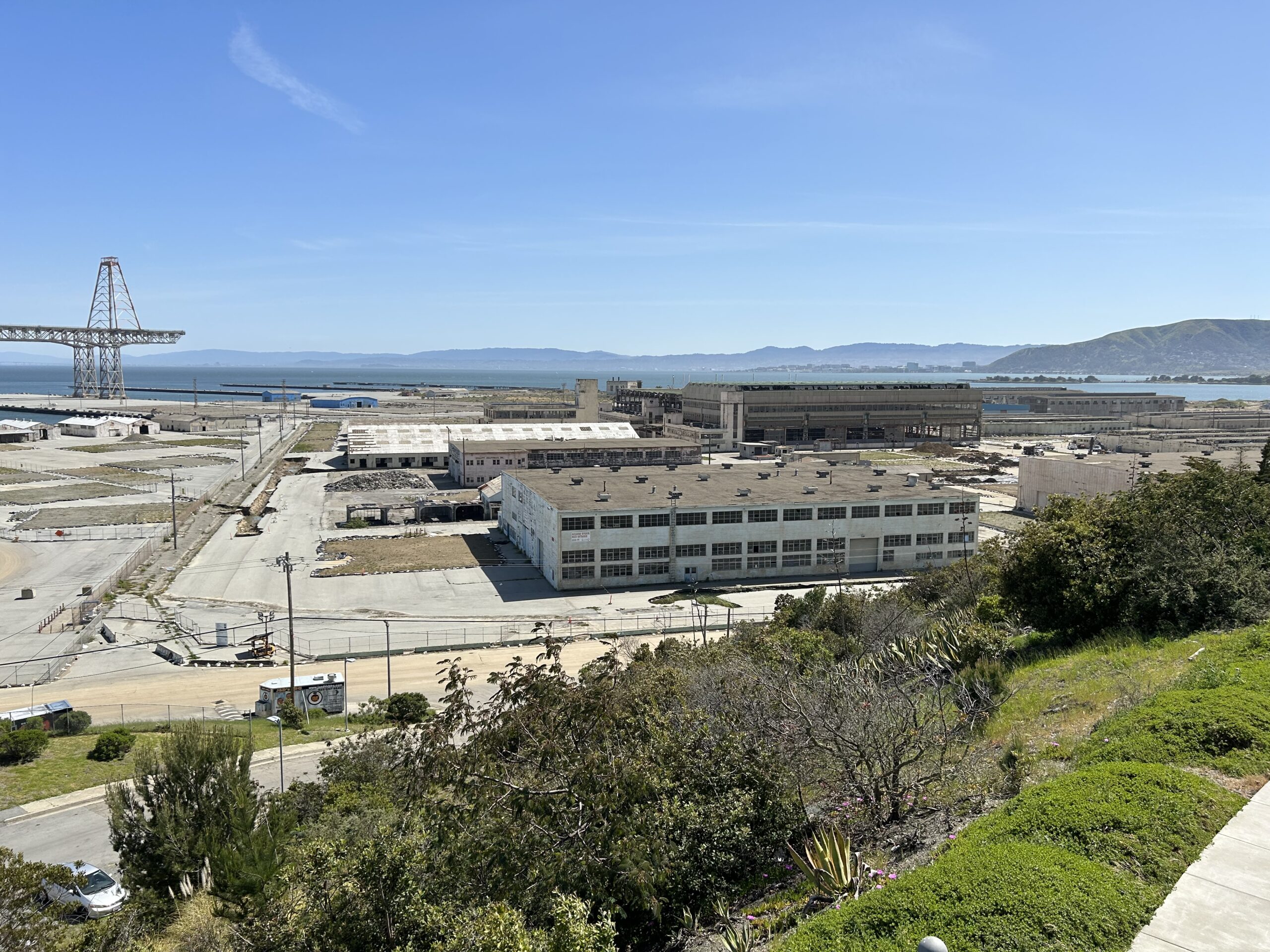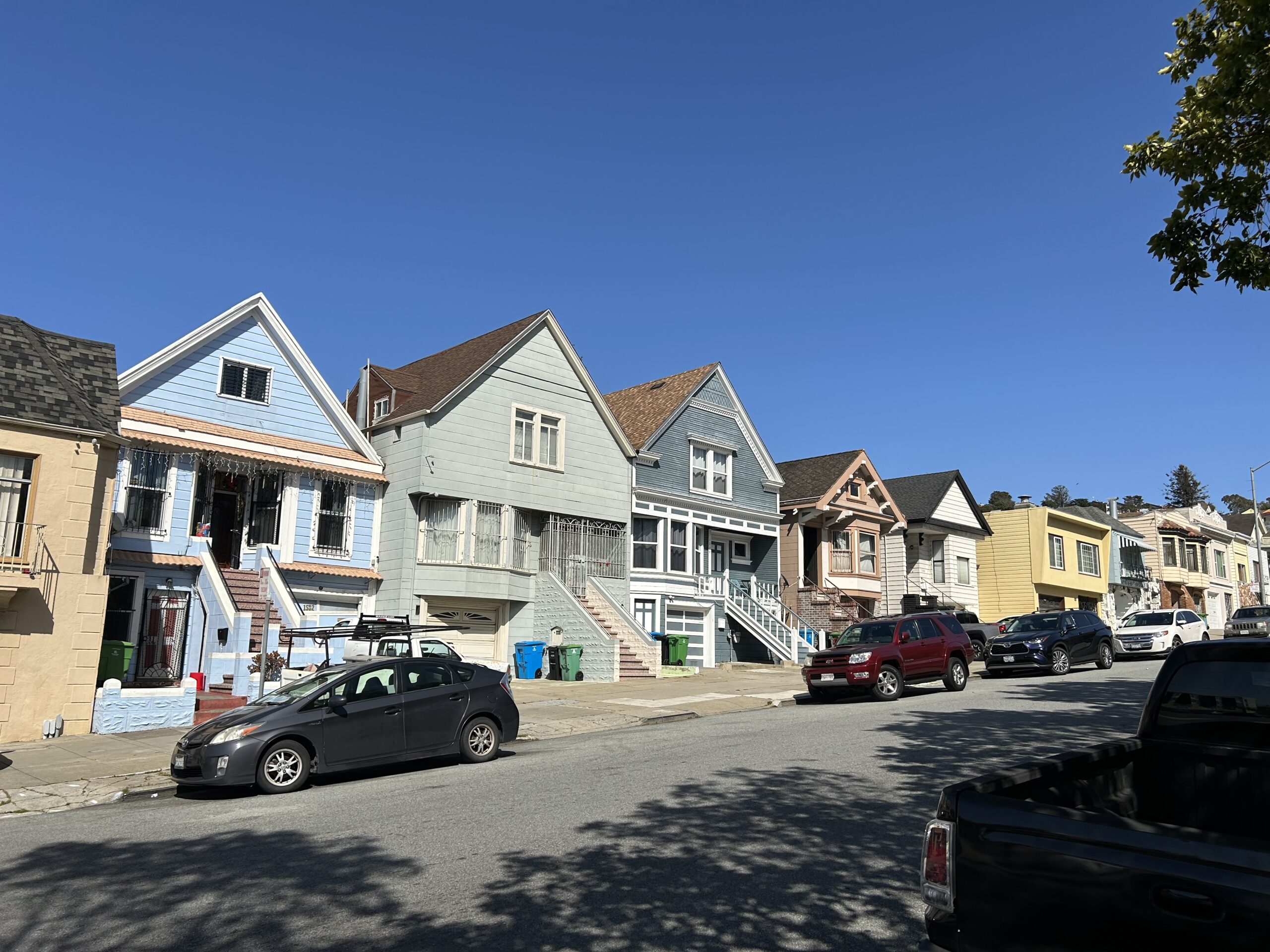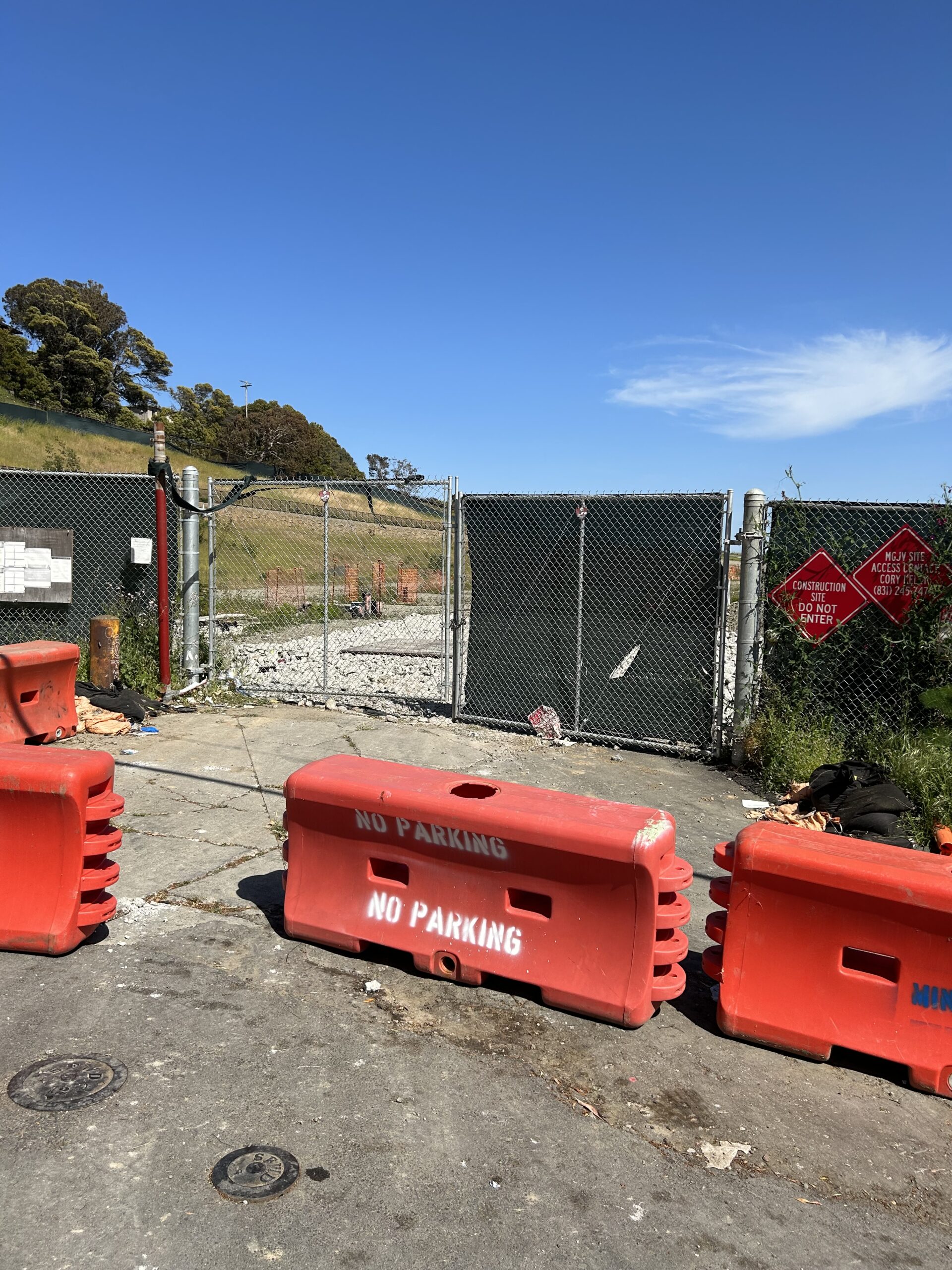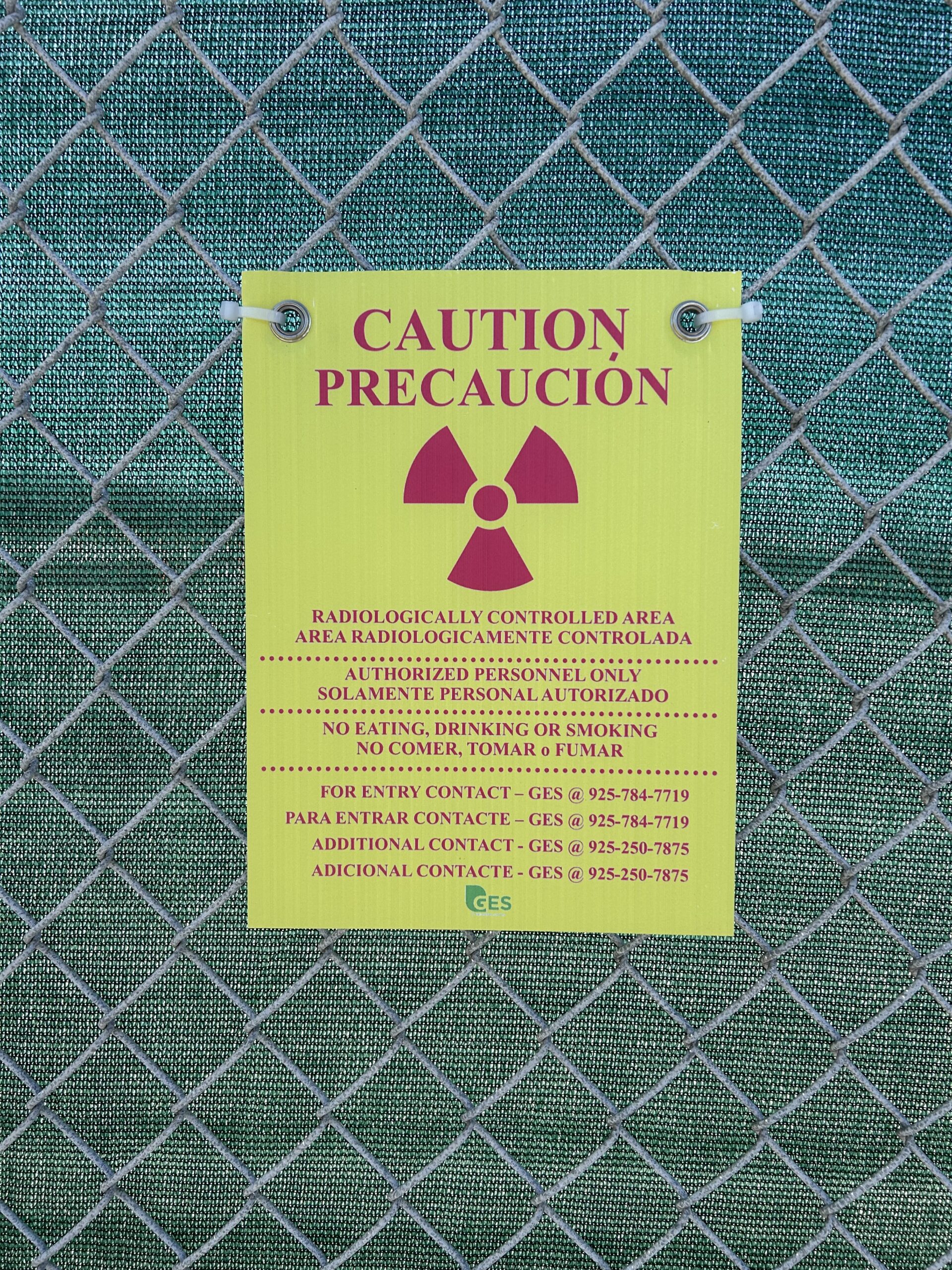MSC Chats with Breathe’s Tania Abdul, Journalist Rebecca Bowe, and Activist Renay Jenkins about the Series and Bayview-Hunters Point
Early this year, Breathe, a Bay Area fiscally sponsored project of MSC, partnered with freelance journalist Rebecca Bowe to release a three-part podcast called Sandblasted at the Shipyard. It covers the history of contamination at the Hunters Point Naval Shipyard (HPNS) and how it has impacted the mostly Black residents of the adjacent Hunters Point-Bayview neighborhood in San Francisco.

The Navy and its contractors, overseen by the EPA and California regulators, have been cleaning up contamination in the shipyard for over thirty years. The end goal — despite concerns that the clean up has been far from adequate — is for the property to be transferred to the city for development. These actions mean big bucks for the city and private developers as parcels of this vast peninsula are sold off and built up. But how will that affect longtime residents who have raised concerns about health issues they believe stem from extended exposure to toxic and radioactive materials?
Over the course of emails and Zooms with Bowe, Tania Abdul, Breathe’s board secretary (who has been working on a documentary on the area), and Renay Jenkins, a member of the Bayview-Hunters Point Mothers and Fathers Committee, we discussed the shipyard and the vibrant community surrounding it, a place where Jenkins says “people can come together to feel whole.” We learned how the podcast and the action plan around the shipyard — which demands transparency, accountability, community power, and real solutions — relate to Breathe’s mission to grow networks that support intersectional work for racial, environmental, and climate justice. Our conversation also touched on why telling stories is crucial — to support healing, to get folks of all ages and backgrounds involved, to shed light on the tireless work of citizen scientists and activists, and, ultimately, to find solutions to this crisis.
As Jenkins told us: “economy is important but if we don’t have clean air and water and resources, there’s no quality of life — health is wealth.”
This interview has been edited for length and clarity.
MSC: Why are you so engaged in San Francisco’s Bayview-Hunters Point neighborhood? And what is it that brought the three of you together?
Tania Abdul (TA): There is a terrible multi-generational legacy of environmental injustice that is coming to a climax in San Francisco around the U.S. Navy’s decommissioned shipyards which are now Superfund-level polluted sites. Once a predominantly African American neighborhood, because of job recruitment and racist home buying and renting policies, Hunters Point Naval Shipyard (HPNS) is about to become very lucrative property. The Navy and the city of San Francisco are rushing to turn it over without fully ensuring future safety against radioactive and toxic contamination under threat of sea level rise.
My organization, Breathe, is working to build power and support for the community members who have suffered there for decades.
Rebecca Bowe (RB): This shipyard is contaminated because of its history of receiving radioactive material after nuclear weapons testing, the National Radiological Defense Laboratory (NRDL) work, and manufacturing radioactive devices for Navy vessels. I grew curious when I was a journalist living in the neighborhood.
Tania: We met Renay through the San Francisco Bay Shoreline Contamination Cleanup Coalition. [It’s] truly intersectional, there are a lot of different types of organizations that are in this coalition, and we’re all pooling our resources to build momentum for work that’s happening all around the San Francisco Bay.
Renay Jenkins (RJ): Things are shaking up [in terms of climate and weather] and people are realizing what a short time we have left to remedy it. I’ve been part of the Bayview-Hunters Point Mothers and Fathers Committee and working with Greenaction for Environmental Health and Justice and I want people to know about the power of women and parents doing the work in the community.
I’m picking up the baton [from Marie Harrison, a local environmental activist, who passed away]. It’s been my honor and privilege to step up and help out with the Mothers and Fathers Committee, to just keep the awareness and the understanding in the spotlight … I’ve just been starting to see how [toxins are] affecting my neighbors, my family, and started to put two and two together … [I’ve seen] different areas and how the smog in the air affects people’s health … I see [these issues] as environmental but also justice, because the people who are most affected by the shipyard were also Black people.
I’m jazzed at meeting these impactful women because they’re women doing excellent work. I’ve had so many women heroes — “sheroes” — over the years … It’s just Kismet, the timing of all of us coming together and the possible outcomes, solutions, and awareness we can generate on this much needed topic.

MSC: Tell us about Bayview-Hunters Point.
RJ: [It started with Black people] coming from down South, all the way to the Bay Area, just to make a living. They built up Oakland and San Francisco … Most Black people, we consider each other family — you go away to college or you move away or you get married or whatever happens, you know, throughout transitions, but you’re always going to be family.
A lot of the people in Bayview-Hunters Point were displaced … But a few are still hanging on … Most people that live there don’t want to leave — I didn’t want to move when I had to move. So I would assume that a lot of people would want to come back if they could. Every Black person’s experience in Bayview is a little different. But there’s nothing like Bayview with the hills and the music and the cars and the people on Third Street. I’ve been in Los Angeles and they’ve got Crenshaw … I’ve been in Oakland and they’ve got International … It’s something that’s culturally unique [but similar within historically Black neighborhoods.]
TA: It’s like other neighborhoods and other towns, but it is not like any neighborhood in San Francisco. Because in San Francisco, people come and go, there is not a multigenerational web of ties in any other neighborhood in San Francisco like there is in Bayview-Hunters Point … People really knew each other, they took care of each other, their grandparents took care of other kids. There were anchors … It’s like a small town in the Midwest … It’s really special.
MSC: What about the shipyard and the contaminated land? Are parcels being developed while the clean-up is taking place?
TA: [On one parcel] they have earthmoving equipment, they’re preparing it for property development — which [disturbs the] soil … It’s always somewhat windy there, sometimes it’s crazy windy … Dr. Ahimsa Porter-Sumchai, [A medical and toxic exposures expert and eco-fraud activist], has pointed out the specific kinds of dust fences that the Navy could have been using to protect local residents, that they have not been using. And so there’s a lot of soil excavation happening … Where they’re pulling up soil and hauling it away.

RB: I attended a press conference in June 2020 hosted by residents who raised the alarm that dust from earthmoving activity could worsen respiratory issues for people who were sheltering in place at the time. People were concerned that, during lockdown, the dust being generated could contain toxic contamination.
TA: They’ve divided up the whole shipyard into ten parcels … And they’re all slated to be turned over to the city of San Francisco for property development by 2025, which is not very long from now … Once you start selling something to somebody who’s going to [build on it], it’s done. You’re not going to be able to fix the soil after [that].
Both market rate and affordable housing [were approved] … [They’ve] got all the plans in place and the money to do the market rate housing, which is quite lucrative, but they hadn’t come up with anything for the affordable housing … So, stereotypically, they’re moving forward with market rate housing and not the affordable, community accessible housing.
RB: There is a portion of the shipyard that has already been developed. A condominium complex exists there now. Several lawsuits have been filed including one by a group of residents who purchased housing units.
RJ: I think it’s kind of ironic that homeowners have their lawsuit but what happened to the people that worked at the shipyard? Their kids? The people who lived in a five block radius?
Everyone asked me about a lawsuit — I thought they were talking about the original people that initially came up sick with different types of cancers from working in the shipyard area, but there’s also the [new residents who] wanted to be close to downtown and kind of got hoodwinked … Two different sets of people that are basically getting the same cancerous problems.
MSC: Why don’t you trust the current cleanup plan as approved by the EPA and the Navy?
RJ: The Navy has betrayed the people’s trust many times over the years. Their first remediation contractor, Tetra Tech Inc., is being sued by the Department of Justice (DOJ) for lying about soil contamination test results at Hunters Point, and it’s still getting government contracts like the spill in East Palestine, OH. Last year San Francisco’s Civil Grand Jury report found that the cleanup plan was inadequate. And the Navy admitted last year that they didn’t take sea level rise into account. They disbanded the original community advisory board, which we’re now working to reinstate [to impact the five year review process].
The community has been deeply damaged from all the deception and policies as well as the contamination. We need reparations, healing, and closure, as well as transparency and answers for the future.
TA: San Francisco Police Department (SFPD) officers are suing the Navy for deceiving them [into believing a building] rented by SFPD on the former shipyard was safe. It was built over the former “radioactive laundry” [where uniforms were decontaminated after sailors scrubbed ships that had been irradiated in atomic bomb tests]. Many officers have gotten aggressive cancers. There are a lot of reasons not to blindly trust the Navy’s intentions to protect our health and safety.
RB: I interviewed one of the whistleblowers from Tetra Tech Inc. Two former project managers, termed “rogue employees” by the company, pleaded guilty in 2017 to falsifying a few soil samples from some site locations and making them look clean on paper. And there have been multiple lawsuits concerning the Tetra Tech Inc. contract and allegations of fraud.
MSC: One potential solution is capping — can you explain what capping is and why it is not an appropriate solution?
RB: [Capping involves] layers of materials that would be cemented over certain contaminated areas rather than excavating those areas … The Navy, in some cases, has deemed this to be one of the most effective [options], and that’s pretty controversial due to concerns like sea level rise, groundwater rise that comes along with sea level rise, and seismic activity. If you have contamination, it’s not going to stay put as long as you have water that is moving.
A San Francisco Civil Grand Jury report has recommended that the city hire [independent] scientists to look into the question of how rising groundwater could present unique hazards for this site.
RJ: Capping isn’t going to cut it.
MSC: And what if a resident digs a hole to plant a tree?
RJ: No-one has a garden in Hunters Point right now [without taking a risk].
TA: There will always be a guideline not to do any gardening on this land, which is totally unreasonable.
MSC: Can you tell us more about why the area is so contaminated?
RB: The Shipyard was designated as a Superfund site in 1989. The source of the contamination goes back many years … In 1946, the U.S. Navy set off nuclear bombs in Bikini Atoll, part of the Marshall Islands, as part of a nuclear test. Ships that were subjected to radioactive fallout were hauled to HPNS to be remediated … There was also a nuclear laboratory that operated on the site.
"Because people who have been dealing with this for generations, they know what needs to happen. They are the most educated and the most cognizant of the right ways to proceed."
MSC: The military’s five year review on the state of the clean-up should be released soon — what’s next?
TA: [This review is] their internal process … They’re supposed to do a review every five years, the EPA is supposed to be involved … It’s a rather opaque process. And it seems to me they’re gonna put out something, and we just have to sort of swallow it. I don’t know that there’s any kind of public input or a place for response …
RJ: We’re holding them accountable and hopefully they can give us some real answers with a little bit of transparency. [Regarding the] clean up, contractors are supposed to take care of this radiation but we don’t know where they’re gonna put it … [Will it just get] put it in another community?
MSC: Rebecca, you mentioned your podcast earlier. What was your motivation for producing this podcast? And how did you decide what to include — it’s a big story with a lot of moving parts.
RB: I’m in Portland, OR now but it was in the Bay Area for 13 years. I was a journalist for much of that time. I had always been interested in the shipyard — I lived right off of Third Street, right on the edge of Bayview and not too far from that site.
I had met folks through journalism and also activism circles in San Francisco who were very concerned about the toxic contamination there and the justice issues that surrounded it. The story was a long-term investment and I’m very grateful to Breathe for helping me get it over the finish line.
I did my news gathering and interviews [from 2017 to 2020] … Getting on the phone with people, going down to the shipyard to meet with people — [local environmental activist] Dr. Ray Tompkins was kind enough to drive me around … [I attended meetings with Harrison], we have some audio of her at these meetings, really telling off the Navy. I saw the multigenerational nature of this fight, and there are so many directions that you could take this story …
The question that really started my research was: how did this site become contaminated in the first place? I ended up going through a lot of classified documents that are stored in the National Archives at San Francisco in San Bruno … and produced by the Navy during the Bikini Atoll tests and the NRDL at its founding … And that’s how I really started to get a much clearer understanding of these ships that were caught in a nuclear test that had gone wrong.
Back at Hunter’s Point they set up a series of remediation tests to try to figure out: how do you clean radioactive material off a ship?
They were sandblasting the hulls of the ships, which is why the podcast is called Sandblasted at the Shipyard. And that material was just going everywhere. And then there would be oil that was within the tank of a ship and they thought, oh, well, let’s just burn it here … So there are all of these different sources of contamination that are very, very widely distributed across this massive space.
MSC: Tania, what does the action plan around the HPNS and the podcast mean for your organization?
TA: We’re a new organization and this particular issue is deep … We’re talking about people who were recruited to come here and live, were prevented from living anywhere else but right next to that toxic shipyard because of racist policies … [This is an] almost a captive population that is very underpowered, doesn’t have a lot of resources, subjected to generations of exposure to all of this toxic material that even back in the 1950s, they knew was really harmful. Then we’re talking about this cleanup that’s being conducted in a way that [does not prioritize] safety or transparency for the local residents …
We’re looking at solutions that can change the way that these environmental justice situations are treated everywhere, where … Instead of coming in and doing these studies [on soil or water], which can be very slanted … [Dr. Porter-Sumchai wants to measure actual contaminants within residents’ bodies].

[All this has] potential ramifications for contaminated sites around the country … So much of what we are looking to do as an organization is to support the most impacted communities to take the lead and to have the power in these struggles. Because people who have been dealing with this for generations, they know what needs to happen. They are the most educated and the most cognizant of the right ways to proceed.
For this situation, where we [demand] a third party [test toxicity levels], we want them to report to the community, not to the powers that be — who clearly do not care about our health and safety … This is a fight for the community to have the power … So this is an amazing first campaign for us.
MSC: Are there ways people can help?
RB: People who care but are primarily focused on other important frontlines can still find ways to support. Movements depend on mutual trust and support that is intersectional.
TA: We want to tell people about educational and action events. [Invite them to] become part of Breathe’s network to engage whenever possible and keep in touch with the story.
RJ: [We need to lobby] members of congress. [We also need to tell] stories that are holistic, including the spirit, arts, and culture of a community, not just the tragic and terrible. It gives a sense of unity and hope. Bayview-Hunters Point has a lot of heart. It’s my home and I want to see it thrive.

MSC: What are the solutions? What do you envision for the future of the area?
TA: We need to organize pressure on city representatives, local public health agencies, and state agencies to place a moratorium on new building on the shipyard until the community approves the comprehensive cleanup. Once there are buildings it’s very unlikely that further cleanup or remediation efforts will be made.
RJ: We need solutions that work with nature, that restore the ecosystem — developing a coral reef, bringing back fishing. [Hunters Point-Bayview was home to the Yelamu and Ramaytush Ohlone people and it is a sacred site]. We need to move the power to the community and not the government or corporate interests.
I’m looking forward to a clean up. But I’m also being realistic, it took a long time to get here so it might take a minute for everyone to come up with a solution … Let’s see what we can negotiate and work with, with finding solutions outside of what we’ve done before. And that’s going to take a lot of maneuvering because a lot of the agencies are used to doing things their way and even the community is used to doing things their way and the youth hardly ever get a say and they’re the ones that have the brightest ideas …
We’re doing a lot of cleanup and bandaging and fixing and remediation when we want to break the cycle and give the children and the youth and the babies that haven’t come yet and even the wildlife a chance to have clean air, clean water, and clean soil.
Fingers crossed that we can have a cleaner environment for the Bayview-Hunters Point residents. This is our chance to take care of our little place.

